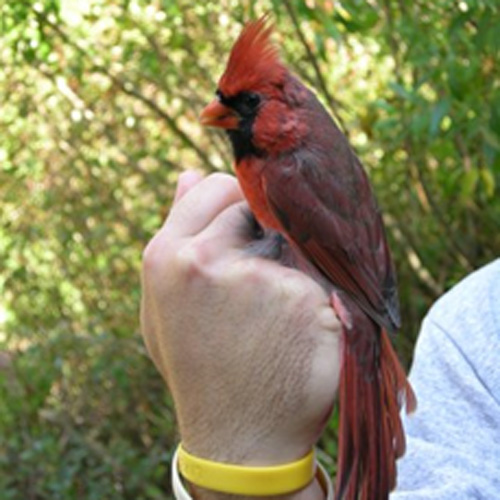
Lyme borreliosis, anaplasmosis, ehrlichiosis, babesiosis, Rocky Mountain spotted fever, Bartonella, tularemia, y más recientemente, Miyamotoi Borrelia (a distant relative of Lyme borreliosis) se reconocen las enfermedades infecciosas transmitidas por garrapatas en los Estados Unidos, among which the Centers for Disease Control and Prevention (CDC) enfermedad reclamaciones de Lyme es la enfermedad más común y de mayor crecimiento. The CDC has very specific criteria for the diagnosis of Lyme disease, which includes a tick bite, a positive Lyme test (laboratory evidence), a bull’s eye rash, and exposure in an endemic area. En 2009, la CDC reported 29,959 Lyme cases, arriba 216% desde 1991. Many Lyme patients do not meet the CDC’s controversial criteria for diagnosis. Además, disagreements on the definition and treatment of Lyme disease have spurred decades of bitter debate between the medical community and victims. Sin embargo, most researchers and Lyme experts agree that the number of people infected in the U.S. today is five to ten times higher than the CDC figures.
Lyme disease continues to spread globally. Garrapatas enfermedad defensores de Australia, Austria, Brasil, Canada, República Checa, Croacia, Dinamarca, Islas Faroe, Finlandia, Francia, Alemania, Grecia, Hungría, Islandia, Irlanda, Países Bajos, Nueva Zelanda, Noruega, Polonia, Rumania, Rusia, Sudáfrica, España, Suecia, Suiza, the UK and the United States joined forces this summer to build awareness in the Worldwide Lyme Disease Awareness Protest.
Hoy, in the fifth article of my global series, “Las garrapatas,” I look at the situation in Canada. Me acompañan por el Dr.. Nicholas Ogden, Senior Research Scientist, Zoonoses Division, Public Health Agency of Canada; Jim Wilson, Presidente, Canadian Lyme Disease Foundation; DR. Felix Sperling, Profesor, Departamento de Ciencias Biológicas, Universidad de Alberta; entomólogo Janet Sperling, Miembro de la Junta, Canadian Lyme Disease Foundation; y John D. De Scott, MSc, Fundador, Asociación de la Enfermedad de Lyme de Ontario, que ha publicado 14 artículos científicos revisados por expertos sobre las garrapatas y la enfermedad de Lyme.
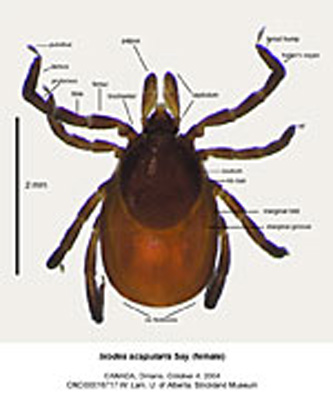
¿Cuál es la incidencia anual de la enfermedad de Lyme en Canadá? ¿Con qué facilidad cree que esta enfermedad se puede propagar a cualquier parte del mundo??
Nick Ogden: En 2011, Había 258 cases reported to the Public Health Agency of Canada. These include cases that are EM (rash) only without serological test results (which are uninformative in early Lyme) as long as there is exposure to an endemic area. As for most notifiable diseases, there will be some degree of under-reporting. As we gather more information, we will be able to better understand the level of reporting.
Lyme disease cannot easily spread to other parts of the world because of the way the disease is spread, which is through the bite of certain types of ticks. These ticks need to be present and established for there to be an ongoing risk from the disease. By attaching to migratory birds, infected ticks can travel outside locations where breeding populations are established. Sin embargo, unless the habitat they are transported to can support breeding populations of ticks, the risk to humans of becoming infected with Lyme disease in those areas remains low.
Jim Wilson: We have no accurate records as it only became a reportable disease nationally in 2010, and even now the record keeping is very sporadic. Physicians in Canada are very afraid to diagnose Lyme disease because they all have heard that any doctor who has become known to be Lyme literate has either had to return their medical license or stop seeing Lyme patients altogether. Physicians coast to coast tell patients to leave the country to get proper diagnosis and treatment.
Todos los registros dados como evidencia de prevalencia sería muy inexacto en cualquier instancia porque las pruebas canadienses actuales siguen los criterios de vigilancia de Estados Unidos CDC como por la Sociedad de Enfermedades Infecciosas de América, que imponen pruebas de que sólo incorporan Borrelia burgdorferi (Bb) cepa B31, a pesar de la evidencia publicada por la Agencia de Salud Pública de Canadá (DR. Nick Ogden) and by Canadian researcher John Scott that we have a wide diversity from within the Borrelia genus occurring in Canada. Bb B31 is an east coast USA strain and is a tick derived strain, and the tests are not capable of picking up strain N40, 297 (a human derived strain used by Igenex in California in their lab tests), nor are they capable of detecting any Borrelial species far enough removed on the genetic scale from Bb B31, of which we have many of in North America.
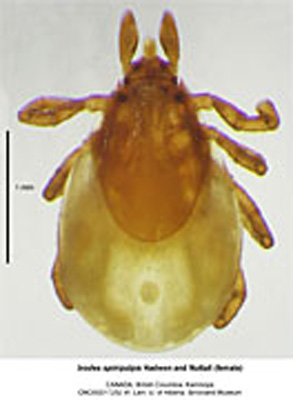
Would you comment on the annual incidence of any of the other tick borne illnesses that are endemic in Canada in addition to Lyme?
Nick Ogden: Although less common, blacklegged ticks can transmit a variety of other diseases in addition to Lyme disease (such as human anaplasmosis, babesiosis, powassan encephalitis virus, a new strain of ehrlichiosis caused by a bacterium similar to Ehrlichia murisand disease associated with infection of the sprichaete Borrelia miyamotoi).
Jim Wilson: We have no idea because testing is infrequent and discouraged in most provinces, using the ridiculous, circular reasoning that we have few positive cases, so why waste money testing. This is the same logic they use to determine whether a positive screening test is a true or false positive.
¿Qué pruebas actualmente disponibles o en desarrollo que usted cree que va a identificar con fiabilidad la enfermedad de Lyme y enfermedades provocada por ella?
Nick Ogden: Lyme disease is diagnosed using a two-tiered testing method, que incluye una prueba de detección ELISA seguido por una prueba de Western blot confirmatorio. El método de prueba de dos niveles se utiliza porque juntos las dos pruebas ofrecen resultados más precisos. This approach is the best laboratory method currently available for supplementing clinical information on Lyme disease and is the gold standard recommended by US and Canadian public health organizations.
All laboratory tests have a margin of error and the Agency recommends that Lyme disease should be diagnosed clinically first and foremost with support from laboratory testing.
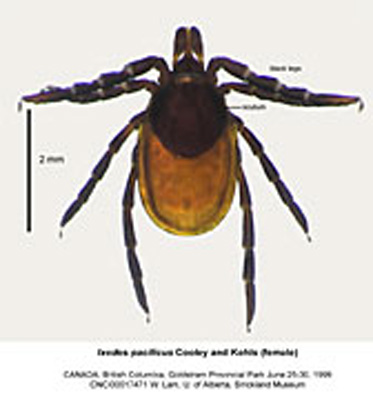
¿Cree usted que existe la enfermedad de Lyme crónica o que es un nombre poco apropiado para otras enfermedades provocadas por la enfermedad de Lyme? Si usted cree en la enfermedad de Lyme crónica, ¿Cuáles cree que son las formas más eficaces para tratarla?
Nick Ogden: There is much debate in the medical community as to the existence of treatment responsive ‘chronic Lyme disease’. The mainstream medical science community currently concludes that treatment responsive ‘chronic Lyme disease’ is either a very rare condition or does not exist at all.
Se reconoce que algunos pacientes que realmente han sufrido la enfermedad de Lyme, y han recibido un tratamiento adecuado, pueden sufrir síntomas debilitantes crónicas de causa desconocida. Esta condición se llama síndrome de la enfermedad de Lyme Publicar (PLDS), que no es sensible al tratamiento con antibióticos.
Jim Wilson: It absolutely exists and is definitely the cause of other diagnoses either directly or indirectly. As you likely know, bacterias espiroquetas y la esclerosis múltiple se remontan mucho tiempo (1911 por lo que yo recuerdo).
¿Cuál es el foco de su investigación y cómo se relaciona a los retos de identificación y curación de la enfermedad de Lyme y enfermedades provocadas por Lyme?
John Scott: I have focused on the source of Lyme disease in nature in Canada. Desde 1991, I have conducted several studies targeting ticks collected from avian and mammalian hosts because my goal is to find the natural sources of the Lyme disease bacterium, Borrelia burgdorferi. During our nationwide, tick-host studies, we have found 6 different species of ticks that carry and transmit B. burgdorferi. Total, I have identified 37 different species of ticks, and published 14 peer-reviewed, scientific articles. Notablemente, we have found divergent strains of B. burgdorferi and, ultimately, these diverse strains can affect the results of serological screening for Lyme disease in patients. Because songbirds widely disperse Lyme disease vector ticks transcontinentally, one does not have to frequent an endemic area to contract Lyme disease. People can contract it in their own backyards. Por lo tanto, visiting an endemic area should not be part of any Lyme disease guidelines for a person who should be reported as a human Lyme disease case.
Janet and Felix Sperling: Our research is focused on describing the full spectrum of bacteria that are found in the ticks that carry Lyme disease (Borrelia). Based on Next Generation sequencing techniques, we’re able to census the bacteria in a single tick. In collaboration with professor Vett Lloyd of Mount Allison University in New Brunswick and professor emeritus Reuben Kaufman of Saltspring Island British Columbia, and with support from our Brazilian colleagues Karina and Marcelo Brandao, and technical support from the Molecular Biology Service Unit at the University of Alberta, we have very promising preliminary results that show that Ixodes ticks in Canada carry a wide variety of many dozens of genera of bacteria, not just Lyme disease. Since we can now look at the bacteria simultaneously, we can also describe interaction effects. Por ejemplo, a tick that carries Lyme disease in addition to Babesia would be expected to transmit a disease that is more serious than a case of Lyme disease by itself. With the techniques being used by Felix’s lab at the University of Alberta, podemos determinar rápidamente cuántas bacterias se encuentran en una marca particular,. Actualmente Canadá está experimentando una expansión en el rango de la enfermedad de Lyme por lo que estamos en un punto de inflexión en la ecología de la enfermedad que es crucial estudiar cuidadosamente desde múltiples ángulos.
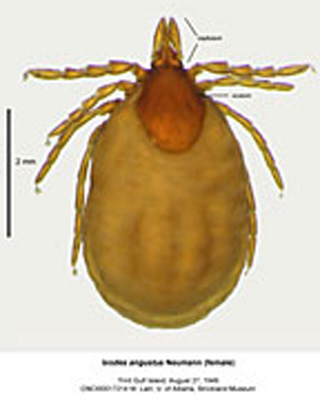
Janet y Félix, on what research do you believe scientists around the world must give priority in order to better treat patients suffering from tick borne illnesses?
Janet and Felix Sperling: La más alta prioridad para la investigación es un mejor diagnóstico. At this point we have no accurate way to determine if someone is suffering from Lyme disease or a disease similar to Lyme disease. Igualmente importante, necesitamos mejores diagnósticos para coinfecciones. A menos que podamos determinar que las bacterias que tenemos que tratar, we’re sailing in uncharted waters. The techniques we’re using with the ticks can potentially be applied to human tissues so this could be a good way to see which bacteria are found in the tissues of people who suffer from Lyme disease.
Jim, what do you believe have been the benefits of raising awareness on a global level?
Jim Wilson: It motivates people and validates what they see occuring in their own country. It also raises the eyebrows of those elected officials in each of our countries who can then see that perhaps what they are hearing from their respective countries’ bureaucrats isn’t necessarily what is the reality of Lyme at the patient and general practitioner level.

Photos are courtesy of Public Health Agency of Canada, Felix y Janet Sperling, y John D. De Scott.
Para más artículos Garrapatas: haga clic aquí
En La Búsqueda Global para la Educación, unirse a mí y reconocidos a nivel mundial los líderes de opinión, incluyendo a Sir Michael Barber (Reino Unido), DR. Michael Bloquear (EE.UU.), DR. Leon Botstein (EE.UU.), Profesor Clay Christensen (EE.UU.), DR. Linda Darling-Hammond (EE.UU.), DR. Madhav Chavan (India), El profesor Michael Fullan (Canada), El profesor Howard Gardner (EE.UU.), El profesor Andy Hargreaves (EE.UU.), Profesor Yvonne Hellman (Países Bajos), Profesor Kristin Helstad (Noruega), Jean Hendrickson (EE.UU.), Profesor Rose Hipkins (Nueva Zelanda), Profesor Cornelia Hoogland (Canada), Honorable Jeff Johnson (Canada), Señora. Chantal Kaufmann (Bélgica), DR. Eija Kauppinen (Finlandia), Secretario de Estado Tapio Kosunen (Finlandia), Profesor Dominique Lafontaine (Bélgica), El profesor Hugh Lauder (Reino Unido), Profesor Ben Levin (Canada), Señor Ken Macdonald (Reino Unido), Profesor Barry McGaw (Australia), Shiv Nadar (India), Profesor R. Natarajan (India), DR. PAK NG (Singapur), DR. Denise Papa (Estados Unidos), Sridhar Rajagopalan (India), DR. Diane Ravitch (EE.UU.), Richard Wilson Riley (EE.UU.), Sir Ken Robinson (Reino Unido), Profesor Pasi Sahlberg (Finlandia), Andreas Schleicher (PISA, OCDE), DR. Anthony Seldon (Reino Unido), DR. David Shaffer (EE.UU.), DR. Kirsten Immersive Are (Noruega), Canciller Stephen Spahn (EE.UU.), Yves Theze (Lycee Francais EE.UU.), Profesor Charles Ungerleider (Canada), Profesor Tony Wagner (EE.UU.), Sir David Watson (Reino Unido), Profesor Dylan Wiliam (Reino Unido), DR. Marcos Wormald (Reino Unido), Profesor Theo Wubbels (Países Bajos), El profesor Michael Young (Reino Unido), y el profesor Zhang Minxuan (De China) a medida que exploran las cuestiones de educación cuadro grande que todas las naciones se enfrentan hoy. La Búsqueda Global para la Educación Comunitaria Página
C. M. Rubin es el autor de dos ampliamente leído serie en línea por la que recibió un 2011 Premio Upton Sinclair, “La Búsqueda Global para la Educación” y “¿Cómo vamos a Leer?” Ella es también el autor de tres libros más vendidos, Incluido The Real Alice in Wonderland.


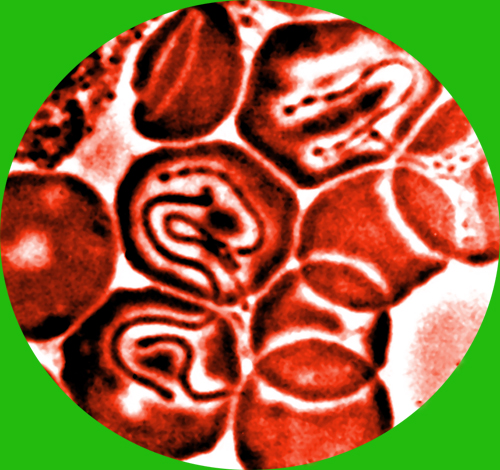
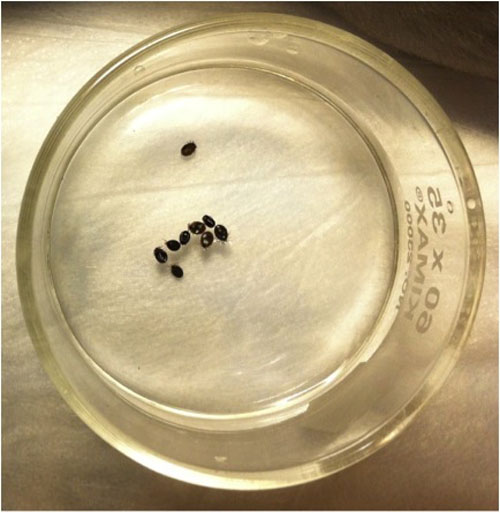
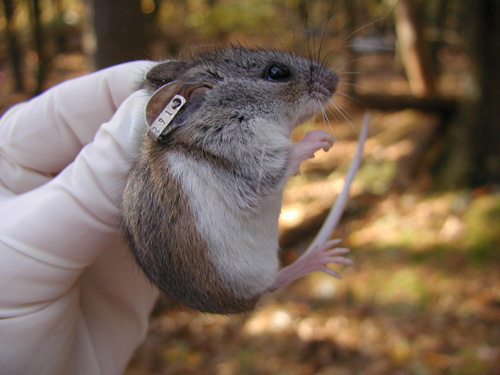

Comentarios recientes